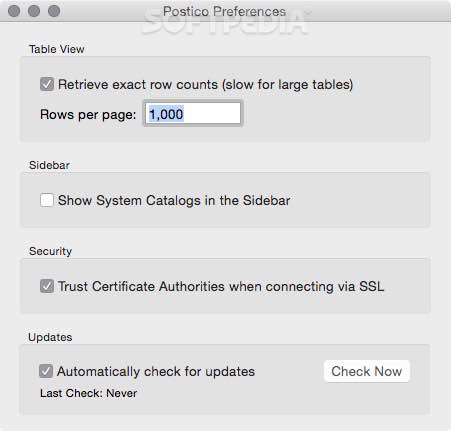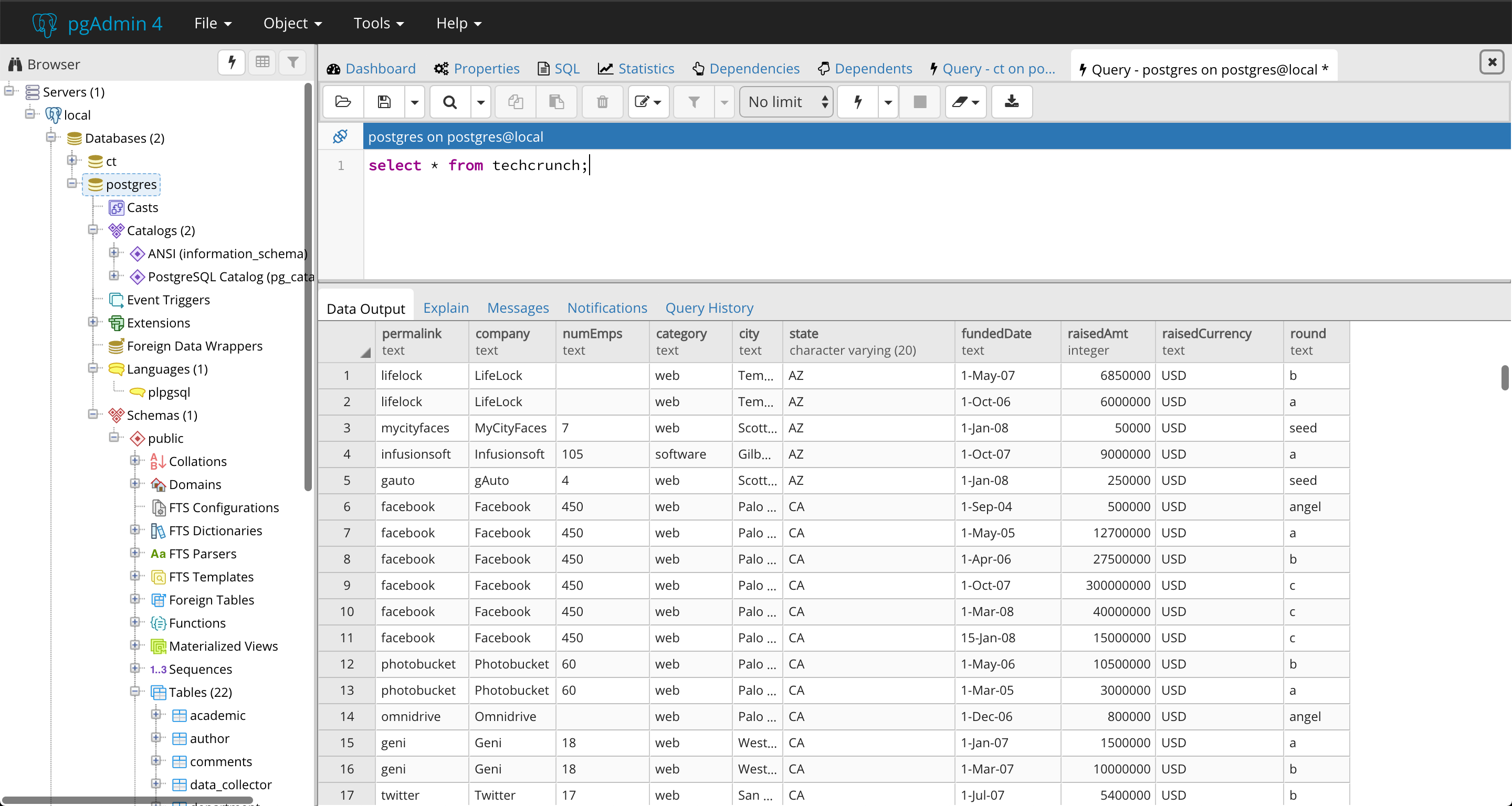

- View table created in postico how to#
- View table created in postico mac os#
- View table created in postico install#
(when you want to make a new connection) ⌥⌘N Opens a new window for the current connection. General Navigation ⌘N Opens the favorite window. Go to Keyboard → Shortcuts → App Shortcuts and you can change the shortcuts for any app on your Mac.

However, you can change any keyboard shortcut in System Preferences. Postico has no built-in feature to change keyboard shortcuts. The shortcuts should feel familiar to most people working on a Mac. I've tried to follow platform conventions as much as possible when picking these keyboard shortcuts. Some buttons also have shortcuts just hover over them and the tooltip will tell you. I mention this because people are increasingly ignoring the wonderful menu bar at the top of the screen. The easiest way to discover keyboard shortcuts is to browse through the application menus. I assume that you are familiar with them anyway.
View table created in postico mac os#
Standard Mac OS shortcuts are not included to keep the list manageable This page describes most keyboard commands supported by Postico. Learn about the scenarios available for Postgres in Azure Data Studio.You are looking at the documentation for Postico v1.5.3 - would you like to go to the latest version instead? Keyboard Shortcuts in Postico Paste the following snippet into the query editor and click Run: - Select rows from table 'customers' ( 2, 'Keith', 'India', 3, 'Donna', 'Germany', 4, 'Janet', 'United the data Paste the following snippet into the query window and click Run: - Insert rows into table 'customers' If nothing is highlighted, clicking Run executes all queries in the editor. Clicking Run executes only the query that is highlighted. You can either append this or overwrite the existing query in the editor. Notifications appear in the MESSAGES pane to show query progress. CREATE DATABASE tutorialdb įrom the toolbar select Run to execute the query. Paste this SQL statement in the query editor that opens up.

Right-click on your PostgreSQL server in the SERVERS sidebar and select New Query. The following steps create a database named tutorialdb: This option lets you specify a friendly name for your server.Īfter successfully connecting, your server opens in the SERVERS sidebar. This option lets you assign this connection to a specific server group you create. The password for the account you are logging in with.Ĭheck this box if you don't want to enter the password each time you connect.įill this if you want the connection to specify a database. In the form that pops up, go to Connection type and select PostgreSQL from the drop-down.įill in the remaining fields using the server name, user name, and password for your PostgreSQL server. If the Connection dialog doesn't open, click the New Connection icon in the SERVERS page: The first time you start Azure Data Studio the Connection dialog opens.

(Alternatively, you can create a Postgres database in the cloud using az postgres up).
View table created in postico install#
Install the PostgreSQL extension for Azure Data Studio.To complete this quickstart, you need Azure Data Studio, the PostgreSQL extension for Azure Data Studio, and access to a PostgreSQL server.
View table created in postico how to#
This quickstart shows how to use Azure Data Studio to connect to PostgreSQL, and then use SQL statements to create the database tutorialdb and query it.


 0 kommentar(er)
0 kommentar(er)
